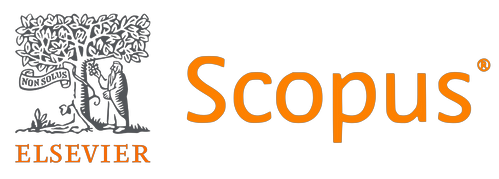Lenguaje, representación y traducción en la escritura etnográfica amazonista. Of Mixed Blood / De sangre mezclada, de Peter Gow
DOI:
https://doi.org/10.5007/2175-7968.2025.e99325Palabras clave:
traducción, etnografía, antropología amazonista, Peter GowResumen
El artículo discute las interacciones entre la etnografía y la traducción a partir del caso de Of Mixed Blood: Kinship and History in Peruvian Amazonia (1991), de Peter Gow. Se trata de un texto etnográfico con gran impacto sobre la teoría de la antropología amazonista y que exhibe una alta reflexividad lingüística. La traducción al español de esta etnografía, De sangre mezclada. Parentesco e historia en la Amazonía peruana, estuvo a cargo de los antropólogos Sebastián Arze y Juan Manuel Rivera Acosta. Fue publicada en el 2020 con el objetivo de devolver al contexto local el conocimiento ahí producido por el antropólogo escocés. Se emplea un análisis contrastivo en dos pasos. En un primer momento, se analizó el texto fuente (TF) para identificar las funciones de la traducción en la producción de la etnografía, en cuanto a lo analítico y lo representacional. En un segundo momento, se compararon un conjunto de segmentos del TF con sus pares del texto meta (TM) para evaluar cómo la traducción al español impacta sobre estas funciones. Los resultados explican tres problemas de traducción relevantes: el traslado de las categorías nativas, específicamente categorías raciales; la representación de los procedimientos de traducción del etnógrafo; y el uso de terminología contemporánea para la descripción de personas e instituciones locales.
Citas
Agar, M. (1982). Toward an Ethnographic Language. American Anthropologist, 84(4), 779–795. https://doi.org/10.1525/aa.1982.84.4.02a00030
Agar, M. (2011). Making Sense of One Other for Another: Ethnography as Translation. Language and Communication, 31(1), 38–47. https://doi.org/10.1016/j.langcom.2010.05.001
Albert, B. (2018). Introdução. Cosmologias do contato no Norte-Amazônico. In B. Albert & A. R. Ramos (Eds.), Pacificando o branco. Cosmologias do contato no Norte-Amazônico (pp. 9–21). IRD Éditions, Imprensa oficial, Universidade Estadual Paulista. https://books.openedition.org/irdeditions/24716
Allard, O. (2019). Amazonian Masters in Theory and in Practice. Journal de La Société des Américanistes, 105(1), 125–141. https://doi.org/10.4000/jsa.16997
Appadurai, A. (1988). Introduction: Place and Voice in Anthropological Theory. Cultural Anthropology, 3(1), 16–20. https://www.jstor.org/stable/656305
Arze, S., & Rivera Acosta, J. M. (2020). Nota de los traductores. In P. Gow, De sangre mezclada. Parentesco e historia en la Amazonía peruana (pp. 17–20). Universidad Católica Sedes Sapientiae, SHARE-Amazónica.
Barreto, J. P., & Lima, T. S. (2023, 29 de julio). Diálogo magistral [Presentación]. XIV Conferencia SALSA 2023. Leticia, Colombia. https://www.youtube.com/watch?v=PuZ7a_PAewI
Belaunde, L. E. (2018). Sexualidades amazónicas. Género, deseos y alteridades. La Siniestra Ensayos.
Buzelin, H. (2007). Translation Studies, Ethnography and the Production of Knowledge. In P. St-Pierre & P. C. Kar (Eds.), In Translation – Reflections, Refractions, Transformations (pp. 39–56). John Benjamins.
Chaves Chamorro, M. (2002). Jerarquías de color y mestizaje en la Amazonía occidental colombiana. Revista Colombiana de Antropología, 38, 189–216. http://www.redalyc.org/articulo.oa?id=105015289008
Churchill, C. J. (2005). Ethnography as Translation. Qualitative Sociology, 28(1), 3–24. https://doi.org/10.1007/s11133-005-2628-9
Clifford, J., & Marcus, G. E. (1986). Writing Culture: The Poetics and Politics of Ethnography. University of California Press. https://doi.org/10.17323/1728-192x-2014-3-94-125
Costa, L. (2019). Language and Ethnography: A Reply to Allard. Journal de La Société des Américanistes, 105(1), 143–160. https://doi.org/10.4000/jsa.17003
Cure Valdivieso, S. (2005). “Cuidado te mochan la cabeza”. Circulación y construcción de un rumor en la frontera amazónica de Colombia, Perú y Brasil [Tesis de Maestría]. Universidad Nacional de Colombia, Sede Amazonia.
de Casanova, E. M., & Mose, T. R. (2017). Translation in Ethnography. Translation and Interpreting Studies, 12(1), 1–23. https://doi.org/10.1075/tis.12.1.01dec
Fabian, J. (2008). Ethnography as Commentary. Writing from the Virtual Archive. Duke University Press.
Ferreira, A. M. A. (2014). O paradigma da descrição na tradução etnográfica: Levi-Strauss tradutor em Tristes Tropiques. Acta Scientiarum Language and Culture, 36(4), 383–393. https://doi.org/10.4025/actascilangcult.v36i4.23837
Gomes, A. M. R., Figueiredo, P. M., Almeida e Castro, P. R., & Romero Jr., R. R. (2023). Interviewing Peter Gow – Dundee, June 24, 2017. Tipití: Journal of the Society for the Anthropology of Lowland South America, 19(1), 164–187. https://doi.org/10.70845/2572-3626.1387
Gow, P. (1991). Of Mixed Blood. Kinship and History in Peruvian Amazonia. Oxford University Press.
Gow, P. (1993). Gringos and Wild Indians Images of History in Western Amazonian Cultures. L’Homme, 33(126), 327–347. https://doi.org/10.3406/hom.1993.369643
Gow, P. (2001). An Amazonian Myth and its History. Oxford University Press.
Gow, P. (2013). Autodenominations: An Ethnographer’s Account from Peruvian Amazonia. Tipití: Journal of the Society for the Anthropology of Lowland South America, 11(1), 52–64. https://doi.org/10.70845/2572-3626.1161
Gow, P. (2015). Steps Towards an Ethnographic Theory of Acculturation. Etnografia. Praktyki, Teorie, Doswiadczenia, 1(1), 34–39. https://doi.org/10.4467/254395379EPT.15.002.6467
Gow, P. (2020). De sangre mezclada. Parentesco e historia en la Amazonía peruana (S. Arze & J. M. Rivera Acosta, Trads.). Universidad Católica Sedes Sapientiae, SHARE-Amazónica.
Hanks, W. F., & Severi, C. (2014). Translating Worlds: The Epistemological Space of Translation. HAU: Journal of Ethnographic Theory, 4(2), 1–16. https://doi.org/10.14318/hau4.2.001
Malinowski, B. (1965). Coral Gardens and Their Magic. Volume II. The Language of Magic and Gardening (2nd ed.). George Allen & Unwin Ltd.
Marin-Lacarta, M., & Yu, C. (2023). Ethnographic Research in Translation and Interpreting Studies. The Translator, 29(2), 147–156. https://doi.org/10.1080/13556509.2023.2233291
McCallum, C. (1990). Language, Kinship and Politics in Amazonia. Man, 25(3), 412–433. https://doi.org/10.2307/2803711
Nord, C. (2010). La intertextualidad como herramienta en el proceso de traducción. Puentes, (9), 9–18. https://wpd.ugr.es/~greti/revista-puentes/pub9/03-Christiane-Nord.pdf
Overing, J., & Passes, A. (2005). Introduction: Conviviality and the Opening up of Amazonian Anthropology. In J. Overing & A. Passes (Eds.), The Anthropology of Love and Anger: The Aesthetics of Conviviality in Native Amazonia (pp. 1–30). Routledge.
Pálsson, G. (1993). Introduction: Beyond Boundaries. In G. Pálsson (Ed.), Beyond Boundaries. Understanding, Translation and Anthropological Discourse (pp. 1–40). Berg.
Rivera Acosta, J. M. (2022). Gow, Peter. De Sangre Mezclada. Parentesco e Historia en la Amazonía peruana (reseña). Revista Española de Antropología Americana, 52(1), 161–164. https://doi.org/10.5209/reaa.77745
Sanjek, R. (1991). The Ethnographic Present. Man, 26(4), 609–628. https://doi.org/10.2307/2803772
Santos Granero, F., & Barclay, F. (2010). Bultos, selladores y gringos alados: percepciones indígenas de la violencia capitalista en la Amazonía peruana. Anthropologica, XXVIII(28), 21–52. http://www.redalyc.org/articulo.oa?id=88636919002
Sarmiento Barletti, J. P. (2020). Introducción a la serie. In P. Gow. De sangre mezclada. Parentesco e historia en la Amazonía peruana (pp. 13–15). Universidad Católica Sedes Sapientiae, SHARE-Amazónica.
Sturge, K. (1997). Translation Strategies in Ethnography. The Translator, 3(1), 21–38. https://doi.org/10.1080/13556509.1997.10798986
Taylor, A.-C. (1993). Review P. Gow, Of Mixed Blood. Kinship and History in Peruvian Amazonia. L’Homme, 33(126–128), 573–575.
Taylor, A.-C. (2022). Anthropology Comes In When Translation Fails. Social Anthropology/Anthropologie Sociale, 30(1), 91–103. https://doi.org/10.3167/saas.2022.300107
Venuti, L. (1995). The Translator’s Invisibility: A History of Translation. Routledge.
Vilaça, A. (2002). Making Kin Out of Others in Amazonia. The Journal of the Royal Anthropological Institute, 8(2), 347–365.
Viveiros de Castro, E. (1993). Review Of Mixed Blood: Kinship and History in Peruvian Amazonia by Peter Gow. Man, 28(1), 182–183. https://doi.org/10.2307/2804457
Viveiros de Castro, E. (1996). Images of Nature and Society in Amazonian Ethnology. Annual Review of Anthropology, 25(1), 179–200. https://doi.org/10.1146/annurev.anthro.25.1.179
Viveiros de Castro, E. (2004). Perspectival Anthropology and the Method of Controlled Equivocation. Tipiti: Journal of the Society for the Anthropology of Lowland South America, 2(1), 3–22. https://doi.org/10.70845/2572-3626.1010
Viveiros de Castro, E. (2010). Metafísicas caníbales. Líneas de antropología postestructural. Katz Editores.
Viveiros de Castro, E. (2018). The Problem of Affinity in Amazonia. HAU: Journal of Ethnographic Theory, 8(1–2), 349–393. https://doi.org/10.1086/698527
Wade, P. (1993). Review Of Mixed Blood. Kinship and History in Peruvian Amazonia. Peter Gow. American Anthropologist, 95(1), 226–227. https://doi.org/10.1525/aa.1993.95.1.02a00840
Descargas
Publicado
Cómo citar
Número
Sección
Licencia
Derechos de autor 2025 Cadernos de Tradução

Esta obra está bajo una licencia internacional Creative Commons Atribución 4.0.
Declaración de Derecho de Autor
Los autores conservan sus derechos de autor y conceden a la revista el derecho a la primera publicación bajo la Licencia Creative Commons Attribution, que permite que se comparta el trabajo reconociéndose la autoría y publicación inicial en esta revista.
Los autores están autorizados a asumir contratos adicionales por separado para la distribución no exclusiva de la versión del trabajo publicada en esta revista (por ej.: publicar en un repositorio institucional o como capítulo de libro, reconociéndose la autoría y publicación inicial en esta revista).





















































